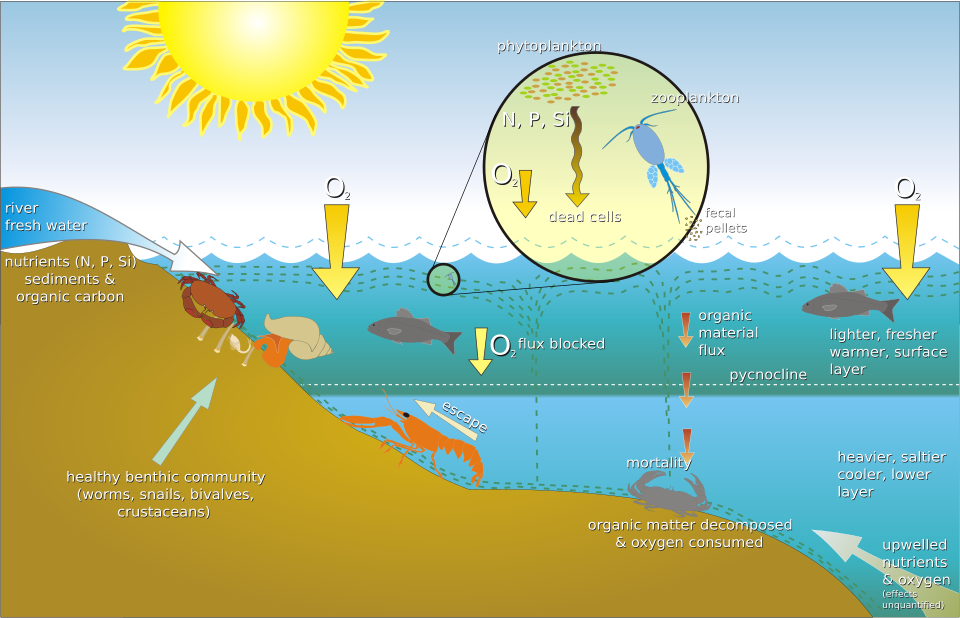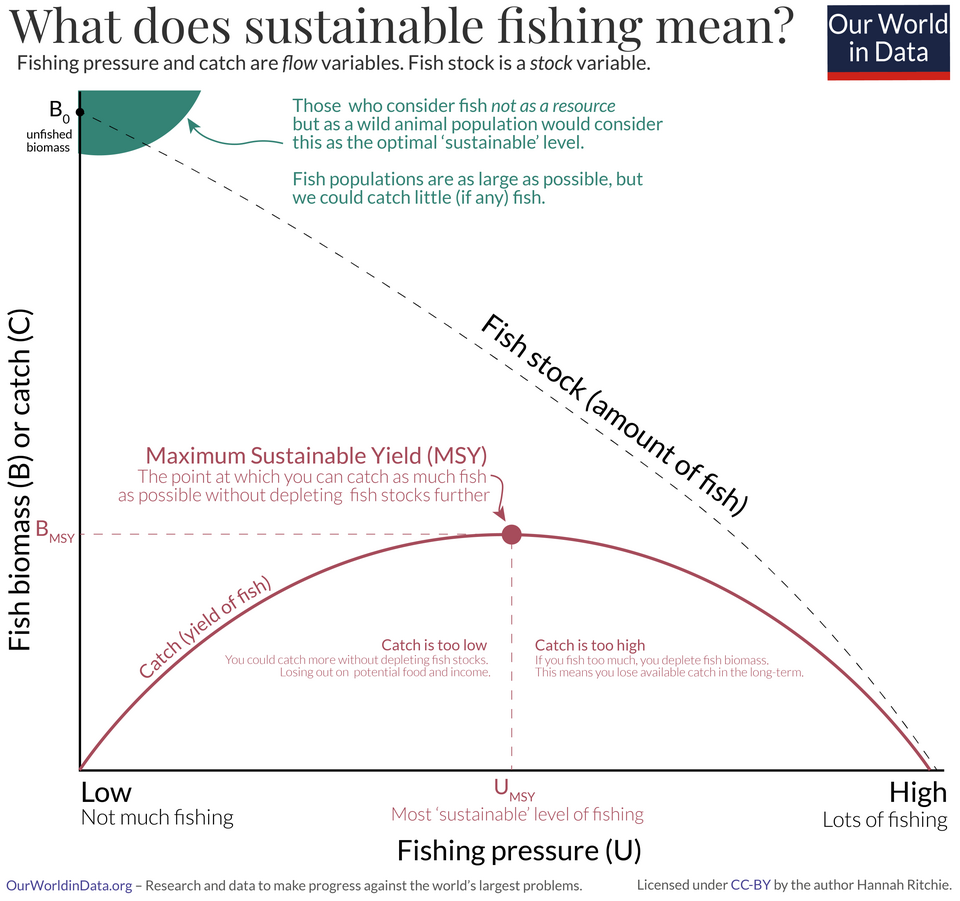OCR Specification focus:
‘Describe how human activities affect plant and animal populations, and how management balances conservation goals with human needs.’
Human activity profoundly influences ecosystems, shaping population sizes, biodiversity, and ecological balance. Understanding conflict management helps sustain resources while meeting the competing needs of people and the environment.
Human Activities Affecting Populations
Habitat Destruction
One of the most significant human impacts on ecosystems is habitat destruction, the process by which natural habitats are altered or removed, reducing the space and resources available for species survival.
Deforestation for agriculture, logging, or urbanisation fragments habitats, isolating populations and reducing gene flow.
Urban expansion replaces ecosystems with impermeable surfaces, altering local microclimates and drainage.
Agricultural intensification eliminates hedgerows and wetlands, leading to the loss of nesting and feeding sites for many species.
Habitat fragmentation: The division of a continuous habitat into smaller, isolated patches, often reducing biodiversity and increasing extinction risk.
Fragmented habitats often create edge effects, where altered light, temperature, and moisture conditions disrupt natural communities. This can advantage invasive species while disadvantaging specialists.
Pollution
Pollution alters abiotic conditions, reducing ecosystem stability and species survival.
Air pollution introduces sulphur dioxide and nitrogen oxides, leading to acid rain that damages forests and acidifies lakes.
Water pollution, including agricultural runoff rich in nitrates and phosphates, causes eutrophication, resulting in algal blooms and oxygen depletion.

Diagram of eutrophication showing nutrient inputs (nitrate and phosphate), algal bloom development, and subsequent oxygen depletion leading to fish kills. Arrows trace the process from runoff to hypoxia, reinforcing cause-and-effect. The figure also labels benthos and plankton communities for added ecological context. Source.
Plastic pollution harms aquatic life through ingestion and entanglement.
Light and noise pollution disrupt natural behaviours such as migration and mating in birds and insects.
Eutrophication: The excessive nutrient enrichment of water bodies leading to dense plant growth and subsequent oxygen depletion, harming aquatic organisms.
Climate Change
Climate change impacts ecosystems globally, shifting the distribution and abundance of species.
Rising temperatures alter breeding seasons and migratory patterns.
Melting polar ice reduces habitats for Arctic species such as polar bears.
Increased frequency of extreme weather events, such as droughts and storms, disrupts ecosystems and food webs.
Ocean acidification, due to higher CO₂ absorption, weakens coral skeletons and shell-forming organisms.
Populations unable to adapt or migrate face local or global extinction, reducing biodiversity and ecosystem resilience.
Overexploitation of Resources
Overharvesting of biological resources directly reduces population sizes.
Overfishing decreases fish stocks below sustainable levels, disrupting aquatic food webs.
Hunting and poaching reduce populations of species such as elephants and tigers, often for trade or sport.
Timber extraction without replanting accelerates deforestation and soil erosion.
Sustainability: The use of resources at a rate that does not exceed their natural replenishment, ensuring availability for future generations.
When resource use exceeds regeneration rates, populations collapse, leading to long-term ecological and economic damage.
Conservation and Human Needs: Balancing Priorities
The Need for Balance
Conservation strategies aim to maintain biodiversity while recognising human dependence on ecosystems for food, water, and materials. Conflict arises when conservation goals restrict local livelihoods or economic growth.
Key challenges include:
Balancing agricultural productivity with habitat protection.
Reconciling economic development with species conservation.
Managing tourism to provide income without degrading natural habitats.
Conflict Between Conservation and Development
Conflicts often arise between stakeholders with differing priorities:
Local communities may rely on land for subsistence farming or logging.
Conservationists aim to protect species and habitats from disturbance.
Governments seek economic growth and infrastructure development.
Businesses exploit natural resources for profit, often at ecological cost.
For instance, the creation of protected areas can restrict access to traditional resources, leading to tension and potential non-compliance unless local people are involved in decision-making.
Conflict Management Strategies
1. Sustainable Resource Use
Ecosystems can be managed sustainably to balance conservation and exploitation.
Selective felling in forestry maintains canopy structure and biodiversity.
Fishing quotas and seasonal bans allow fish populations to recover.

Graph showing the Maximum Sustainable Yield (MSY) concept: catch increases with fishing pressure to a peak (MSY) before declining as stocks are over-exploited. The figure distinguishes stock biomass from annual catch, helping students link quota policy to population dynamics. Extra contextual annotations reflect applied fisheries practice. Source.
Agroforestry integrates trees with crops, preserving soil fertility and biodiversity.
These approaches maintain productivity while minimising ecological damage.
2. Community Involvement
Effective management requires local participation and education.
Community-based conservation empowers locals to manage resources responsibly.
Ecotourism provides financial incentives to conserve wildlife and habitats.
Environmental education promotes awareness of the importance of sustainable practices.
By involving stakeholders, conflicts are reduced, and conservation becomes a shared responsibility.
3. Legal Protection and Policy Frameworks
Government action can regulate human impacts through laws and incentives.
Protected areas (e.g. national parks) restrict harmful activities.
Environmental Impact Assessments (EIAs) evaluate the consequences of proposed developments before approval.
International agreements, such as CITES (Convention on International Trade in Endangered Species), prevent overexploitation of endangered species.
Such frameworks ensure human activities remain within ecological limits.
4. Economic and Social Incentives
Financial measures encourage sustainable practices.
Subsidies for renewable energy reduce dependence on fossil fuels.
Payments for ecosystem services reward landowners for conserving biodiversity.
Fair trade and certification schemes, such as the Forest Stewardship Council (FSC), promote environmentally responsible production.
Ecosystem services: The benefits humans obtain from ecosystems, including provisioning (e.g. food), regulating (e.g. climate control), cultural, and supporting services.
Incentivising conservation aligns economic gain with ecological responsibility.
Monitoring and Adaptive Management
Continuous monitoring ensures sustainability targets are met and strategies remain effective.
Population surveys track species abundance and recovery.
Remote sensing assesses land-use changes.
Adaptive management allows policy adjustments in response to new data or environmental changes.
Adaptive management: A dynamic approach to ecosystem management that modifies strategies based on ongoing monitoring and outcomes.
Effective conflict management depends on feedback loops between science, policy, and society.
FAQ
Conflicts usually arise when conservation policies restrict access to land or resources that local people depend on for food, fuel, or income.
Common causes include:
Establishment of protected areas that limit farming, fishing, or hunting.
Relocation of communities for habitat restoration projects.
Economic losses when traditional livelihoods are replaced by conservation priorities.
Successful management involves community engagement, compensation schemes, and the development of alternative sustainable livelihoods to ensure both conservation and human welfare are achieved.
EIAs predict the potential ecological and social consequences of proposed developments such as roads, dams, or industrial zones.
They help by:
Identifying sensitive species or habitats before construction begins.
Allowing mitigation strategies (e.g. wildlife corridors, replanting).
Involving local stakeholders to increase transparency and reduce disputes.
By requiring developers to modify or redesign projects, EIAs balance economic development with environmental protection, preventing conflict before it arises.
Local communities often have direct dependence on natural resources and valuable knowledge of local ecosystems. Excluding them leads to resistance and illegal exploitation.
Participation ensures:
Shared responsibility for resource use and monitoring.
Economic benefits through ecotourism, sustainable harvesting, or conservation employment.
Greater trust between authorities and residents, making management policies more effective and fair.
Inclusive conservation empowers people to act as custodians of biodiversity rather than competitors for resources.
Financial mechanisms encourage individuals and organisations to conserve rather than exploit ecosystems unsustainably.
Examples include:
Payments for ecosystem services (e.g. maintaining forests for carbon storage).
Subsidies for renewable energy or sustainable farming.
Certification schemes like the Forest Stewardship Council (FSC) rewarding responsible producers.
Such incentives make conservation economically viable, aligning environmental goals with market demand and reducing long-term resource conflicts.
Climate change alters habitats, species distributions, and resource availability, intensifying competition between human and wildlife populations.
Impacts include:
Shifting agricultural zones forcing communities into new areas of ecological importance.
Increased droughts and floods reducing resources for both people and animals.
Migration of species into human-dominated landscapes, increasing crop damage or livestock predation.
These pressures require adaptive management—flexible conservation plans that adjust to environmental changes while supporting local livelihoods.
Practice Questions
Question 1 (2 marks)
Explain how habitat destruction caused by human activity can lead to a reduction in biodiversity within an ecosystem.
Mark scheme:
1 mark for identifying that habitat destruction reduces the availability of suitable living conditions for species.
1 mark for stating that this leads to loss of species and therefore decreased biodiversity due to reduced population sizes or local extinctions.
Question 2 (5 marks)
Discuss how sustainable management strategies can reduce conflict between human needs and conservation goals, using examples from forestry or fisheries.
Mark scheme:
1 mark for identifying that sustainable management aims to use resources at a rate that allows natural regeneration (definition or idea of sustainability).
1 mark for describing a forestry example such as selective felling or replanting to maintain canopy cover and biodiversity.
1 mark for describing a fisheries example such as quotas or seasonal bans allowing stock recovery.
1 mark for explaining how these strategies reduce conflict by meeting economic or social needs while protecting ecosystems.
1 mark for reference to stakeholder involvement or community-based approaches improving compliance and long-term success.

